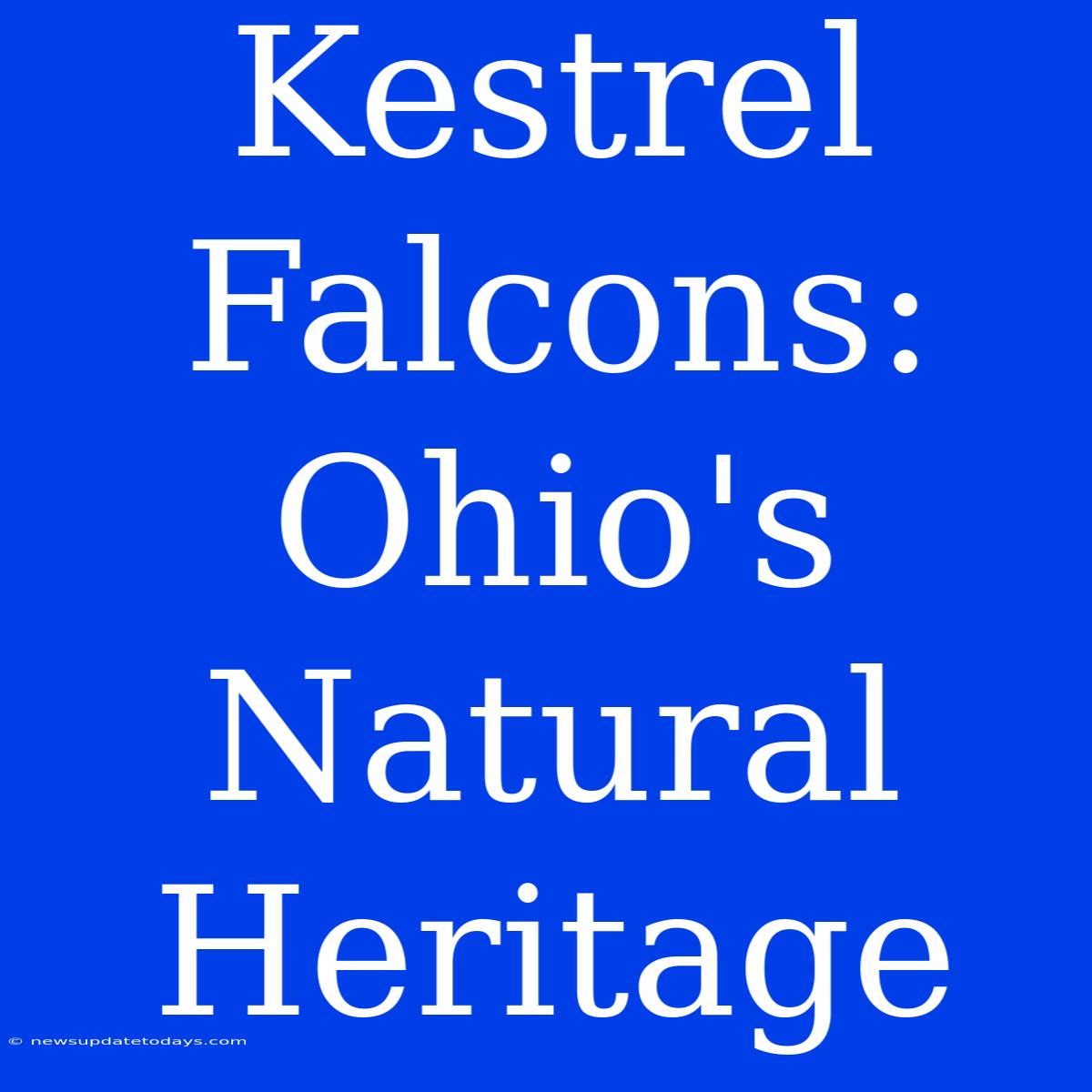Kestrel Falcons: Ohio's Natural Heritage – A Glimpse into a Majestic Bird
Ohio's diverse ecosystem boasts a captivating array of wildlife, and among its feathered jewels are the magnificent kestrel falcons. These small but powerful birds of prey play a crucial role in maintaining the state's ecological balance. This article delves into the fascinating world of kestrel falcons in Ohio, exploring their habitat, behaviors, and the importance of their conservation.
Understanding the American Kestrel in Ohio
The American kestrel (Falco sparverius) is the smallest falcon found in North America, and it's a common sight across Ohio. Unlike their larger cousins, these agile hunters are easily identifiable by their distinctive markings: a rusty-colored back, barred tail, and a prominent black "maltese cross" on their wings. Males typically display a bluish-grey head, while females have a more reddish-brown hue.
Habitat and Distribution: Where to Spot Kestrel Falcons in Ohio
Kestrel falcons are remarkably adaptable, thriving in a variety of habitats across Ohio. You're likely to spot them in:
- Open fields and grasslands: These expansive areas provide ample hunting grounds for the kestrel's primary prey, such as insects, small rodents, and reptiles.
- Agricultural lands: Fields with scattered trees or hedgerows offer ideal perching spots for these birds to scan for prey.
- Wooded edges and clearings: The juxtaposition of open spaces and wooded areas provides both hunting and nesting opportunities.
- Urban areas: Surprisingly, kestrel falcons have adapted to urban environments, utilizing structures like utility poles and buildings as perches and nest sites.
While relatively widespread throughout Ohio, their populations can fluctuate depending on factors like food availability and habitat loss.
Hunting and Diet: Masters of Aerial Acrobatics
Kestrel falcons are exceptional hunters, exhibiting remarkable aerial skills. Their hovering flight, allowing them to meticulously scan the ground for prey, is a captivating spectacle. Once prey is spotted, they execute swift dives, utilizing their sharp talons to capture their unsuspecting victims. Their diet largely consists of:
- Insects: Grasshoppers, crickets, and beetles are common prey items.
- Small rodents: Mice, voles, and shrews often fall victim to their hunting prowess.
- Reptiles: Small snakes and lizards are occasionally included in their diet.
- Birds: While less frequent, they may also prey on smaller birds.
Nesting and Reproduction: Ensuring the Future of Kestrel Falcons
Kestrel falcons usually nest in cavities, often utilizing existing holes in trees, cliffs, or even human-made structures. They are not cavity excavators, relying on pre-existing spaces. The female lays a clutch of 3-7 eggs, which she incubates for approximately 28-30 days. After hatching, both parents contribute to the feeding and care of the young, which fledge around 28-35 days of age.
Conservation Efforts: Protecting Ohio's Kestrel Falcons
While American kestrels are not currently considered endangered in Ohio, several factors threaten their populations:
- Habitat loss: Urban sprawl and agricultural intensification continue to reduce the availability of suitable nesting and hunting grounds.
- Pesticide use: Exposure to pesticides can negatively impact the health and reproductive success of kestrels.
- Collisions with vehicles: Road traffic poses a significant threat, especially during hunting or migration.
Conservation efforts are crucial to ensure the long-term survival of kestrel falcons in Ohio. These efforts include:
- Habitat protection and restoration: Preserving existing grasslands and creating new habitat corridors is vital.
- Reducing pesticide use: Promoting sustainable agricultural practices can minimize the impact of pesticides on wildlife.
- Public awareness and education: Raising public awareness about the importance of kestrel falcon conservation can encourage responsible actions.
By understanding and appreciating these magnificent birds of prey, we can work together to protect their future and ensure that they continue to grace the skies of Ohio for generations to come. Observing these aerial acrobats is a true testament to the beauty and wonder of Ohio's natural heritage.

